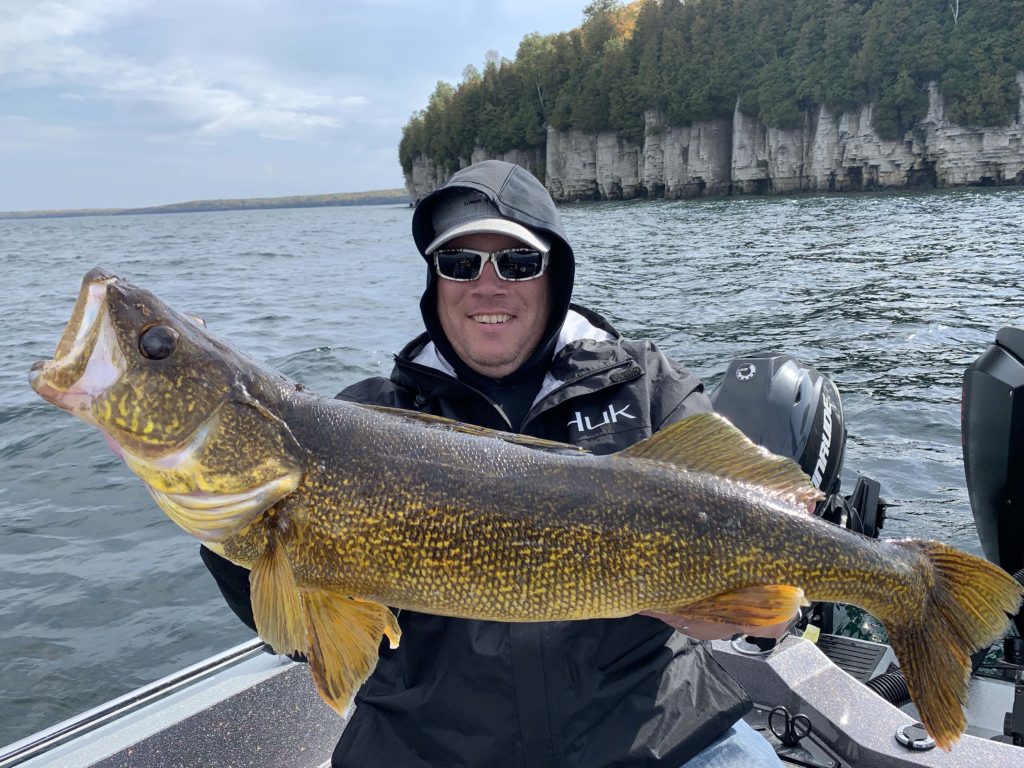Walleyes are one of the most sought after bites in North American freshwater. They’re good-eating and good-fighting, but they can be difficult to find if fishing unfamiliar water with the wrong equipment.
This article is geared towards shedding light on the ways to get hooked up! no matter the water, weather or fishing conditions.
Trolling
Walleye fishermen usually concentrate on the bottom, but often the most active fish are suspended in the water column. When trolling, vary the depth of your crankbaits by adding or subtracting line behind the planner boards to achieve the desired depth required. Inline weights are good for deeper suspended fish and trolling with walleye fishing lures, like spinner rigs, walleye spoons, crankbaits all work. Sometimes the ‘eyes are out on the prowl,’ foraging on minnows or shad that are schooled somewhere between the top and bottom. Watch your depth finder for clues to their whereabouts and fish accordingly.
Trolling can be a deadly way to cover big bodies of water breaking down areas is an effective way to catch walleyes, but getting starting can be a challenge. Use the same techniques that big-water salmon anglers employ to attain appropriate depth—downriggers, snap weights, in-line sinkers, diving planers, or lead-core line. Walleyes are often gear shy, however, so increase the length of the leader. Fluorocarbon leaders will help, but be careful, as they have no stretch.
Planer boards that carry crankbaits away from the boat and are especially important in fishing big water. Anglers who troll many lines usually use offshore planer boards that are connected to each rod, and they clip to their lines. Anglers walleye boats can easily fish up to four to five lines per side with these offshore in-line planner boards.
The key is to set the far-running lines first. Position the rods closest to the bow, setting near-running lines last and toward the stern. Allow more line out before you attach the outside boards, so the baits trail farther behind the boat. That will let you reel in fish on an outside line without getting tangled.
Crankbaits
Planer boards that carry crankbaits away from the boat and are especially important in fishing big water. Anglers who troll many lines usually use offshore planer boards that are connected to each individual rod, and they clip to their lines. Anglers walleye boats can easily fish up to four to five lines per side with small in-line planers.
The key is to set the far-running lines first. Position the rods closest to the bow, setting near-running lines last and toward the stern. Allow more line out before you attach the outside boards, so the baits trail farther behind the boat. That will let you reel in fish on an outside line without getting tangled.

Jigging
Most walleye anglers who jig concentrate on 20 to 30 feet of water on Green Bay, but walleyes in shallow water that are generally ignored. This is especially true during periods of high water when the predators move shallow to forage. Jigs tipped with plastics or ripping raps produce walleye in 10 to 15 feet of water. Nightcrawlers tipped with jig heads work when casting around rock piles or sand and don’t overlook the edges moonshine shiver minnows when walleyes are active!
One of the toughest bites walleye anglers face is immediately after a weather front passes. With a high, clear sky, the fish often sulk in the depths. The key is to concentrate on deepwater structure and fish with jigs and live bait, spot locking or drifting around humps and break lines, usually where the bottom begins to flatten out.
Green Bay Trophy Fishing Knows Green Bay Walleye Fishing
We have been Green Bay walleye fishing guides for over 25 years. We have all the best equipment, local knowledge of all the best fishing spots on the map (and some that aren’t) and an impressive track record of providing our customers with a lot of walleye.
Whether you’re looking to hire a Green Bay walleye fishing guide or just looking for some sound fishing tips for the area, give us contact us today.
